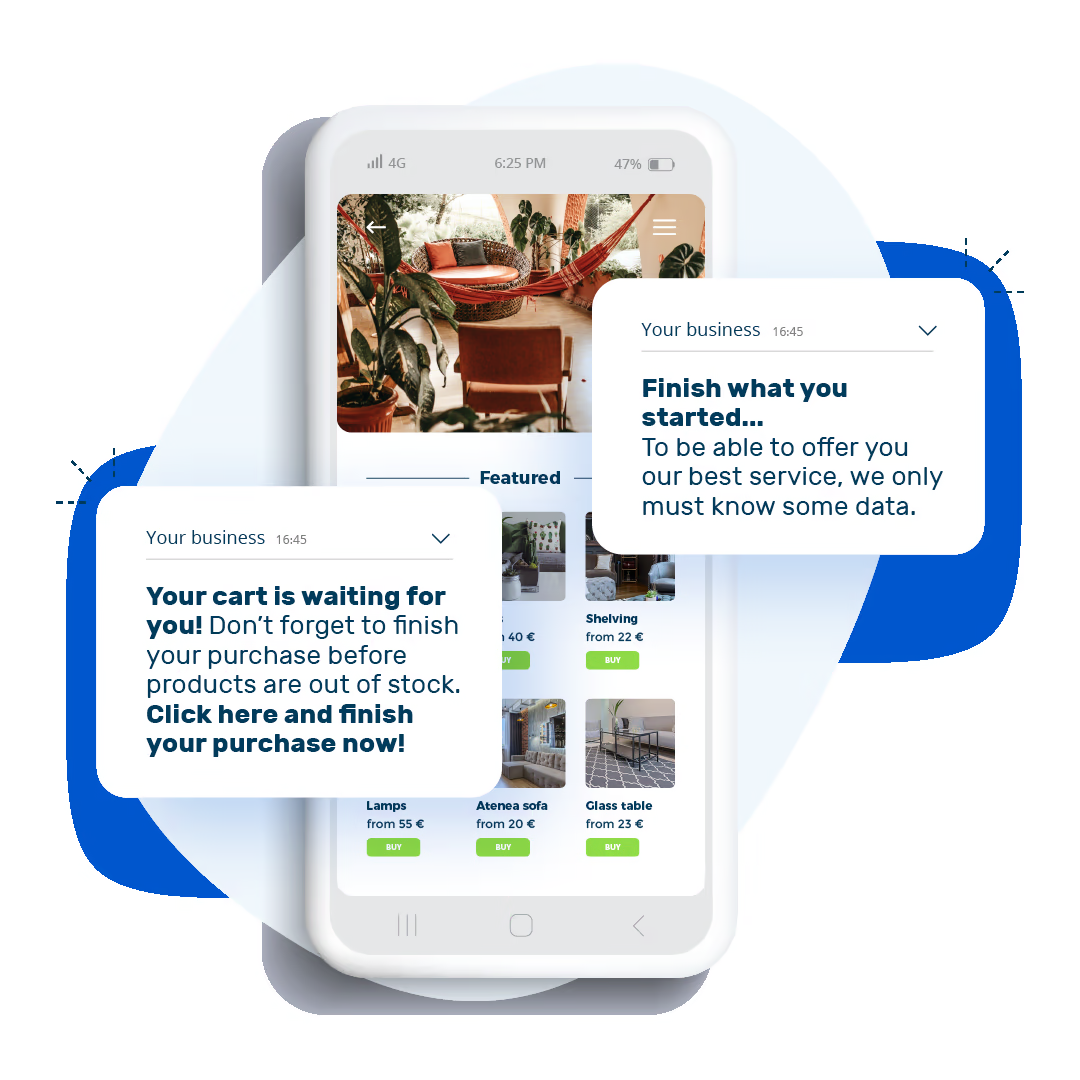Blog
Remarketing: don't let your users forget about you


Remarketing: don't let your users forget about you
What is remarketing and what is it for?
When we talk about remarketing, we are referring to a digital marketing technique that consists of re-impacting users who have already had some type of interaction with our brand, but who have not converted. These can be visitors who have abandoned a shopping cart, users who have visited certain pages, or even those who have left their details in a form without filling it out.
This approach is especially effective in keeping the brand in the consumer’s mind, generating new conversion opportunities. At its core, it’s about offering a second chance to capture the attention of an already qualified lead, rather than starting from scratch with a new one.
How does remarketing work in digital marketing?
The basis: cookies and pixels
The technical operation of remarketing is based on the use of cookies or pixels that are integrated into the website to identify users who have performed certain actions. These code snippets allow you to create lists of custom audiences that can later be impacted with specific ads.
Available platforms and channels
Remarketing can be run from different platforms such as Google Ads, Meta Ads (formerly Facebook), and other display networks. In addition, today it is possible to integrate this strategy into a customer acquisition platform such as indigitall, from where the different communication channels can be centrally coordinated.
What do you need to start a remarketing campaign?
Before implementing a remarketing strategy, it is essential to have some key elements that allow you to execute the campaign with guarantees of success:
- Sufficient traffic source: For remarketing to work, you first need visitors to your website or app. Without a reasonable volume, the audience to be impacted will be too small.
- Installation of tracking tags: Whether using cookies, pixels or SDKs, you must make sure that you have the tracking of user behavior well configured.
- Qualified database: If you’re going to use strategies like customer list remarketing, you’ll need a clean and up-to-date database of emails or user IDs.
- Automation tool: Having platforms like indigitall will allow you to schedule and execute your impacts from a single dashboard.
- Defined objectives: It is not enough to impact for the sake of impacting. Define what action you expect the user to take and create specific campaigns for each stage of the funnel.

Is remarketing and retargeting the same? Differences
Although they are often used synonymously, remarketing and retargeting are not exactly the same thing, although they both share the goal of re-impacting users who have already interacted with our brand.
Retargeting usually refers specifically to the delivery of paid ads (mainly through display or social media) aimed at users who have visited a website or shown interest digitally.
On the other hand, remarketing has a broader focus and includes strategies that can be used by other channels, such as email marketing or push notifications, and that are based on the business’s own data, such as customer lists or leads.
In short:
- Retargeting = paid ads to anonymous users.
- Remarketing = personalized communication to identified users.
Both concepts are complementary and, used correctly, enhance the effectiveness of any digital strategy.
Types of remarketing you can implement in your business
Standard remarketing
It consists of showing ads to users who have already visited your website. This type is ideal for generating recognition and maintaining interest.
Dynamic remarketing
It goes a step further and allows you to show personalized ads with specific products or services that the user has previously viewed. This makes it especially effective in e-commerce.
Customer Match Remarketing
It is based on the use of proprietary databases (email marketing, CRM) to directly impact identified users. It’s an interesting way to win back lost customers through automated strategies and relevant content.
Search engine and social media remarketing
Search engines such as Google can show ads when users return to related queries. In social media, remarketing is integrated through custom audiences based on behaviors or interactions.
Effective remarketing strategies to increase conversions
Message personalization
Generic messages no longer work. Successful remarketing should tailor content to the user’s previous action. For example, if someone has viewed a specific category of products, the ads should be aligned with that interest.
Urgency and scarcity
Urgency strategies such as “only 2 units left”, “limited time offer” or “reserve before it sells out” can make the difference between an immediate conversion and a lost sale.
Impact sequence
Avoid showing the same ad repeatedly. Design a logical sequence of messages that evolves with each impact. This helps to maintain interest and increase the conversion rate.
Process automation
Using platforms such as indigitall allows you to automate remarketing and schedule actions based on user behavior at each stage of the funnel. This optimizes times and improves results.
Multichannel remarketing: how not to saturate and how to convince
Frictionless integration
A common mistake in remarketing strategies is to saturate the user with the same message on different channels. To avoid this, it is crucial to integrate all channels on the same platform and coordinate times and formats.
Alternating formats
Toggling between email, push notifications, in-app messages, or even SMS allows you to stay engaged without being intrusive. Variety also helps improve brand recognition.
Frequency and timing
Setting an appropriate frequency is essential. An excess of impacts can generate rejection. The key is to make an impact at the right time, just when the user is most willing to convert.
How to measure the success of your remarketing campaigns
Key indicators
- CTR (Click Through Rate): Measures the effectiveness of the message.
- Conversion rate: Indicates how many impacted users performed the desired action.
- ROAS (Return on Ad Spend): Measures the return on ad spend.
- Engagement: Time of dwelling, interactions and recurrence.
Analysis tools
Platforms such as Google Analytics, Meta Ads Manager or comprehensive solutions such as indigitall offer dashboards where it is possible to monitor all metrics in real time and make decisions based on data.
When NOT to remarket?
While remarketing is very powerful, there are situations where it’s best not to apply it:
- When the product has not generated real interest: If the user has only stayed a few seconds on the website, it can be counterproductive.
- If you don’t have clear segmentation: Generic impact is often ineffective.
- When it has already been converted: Avoid impacting customers who have already performed the action so as not to generate frustration.
Remarketing is one of the most effective digital marketing tools for transforming abandonment into conversion. When applied with intelligence, personalization, and a well-executed multichannel strategy, it can multiply your results. At indigitall we are experts in creating automated and personalized digital experiences for each phase of the customer journey. If you want to implement an efficient remarketing strategy from a single customer acquisition platform, contact us and request a no-obligation demo.












